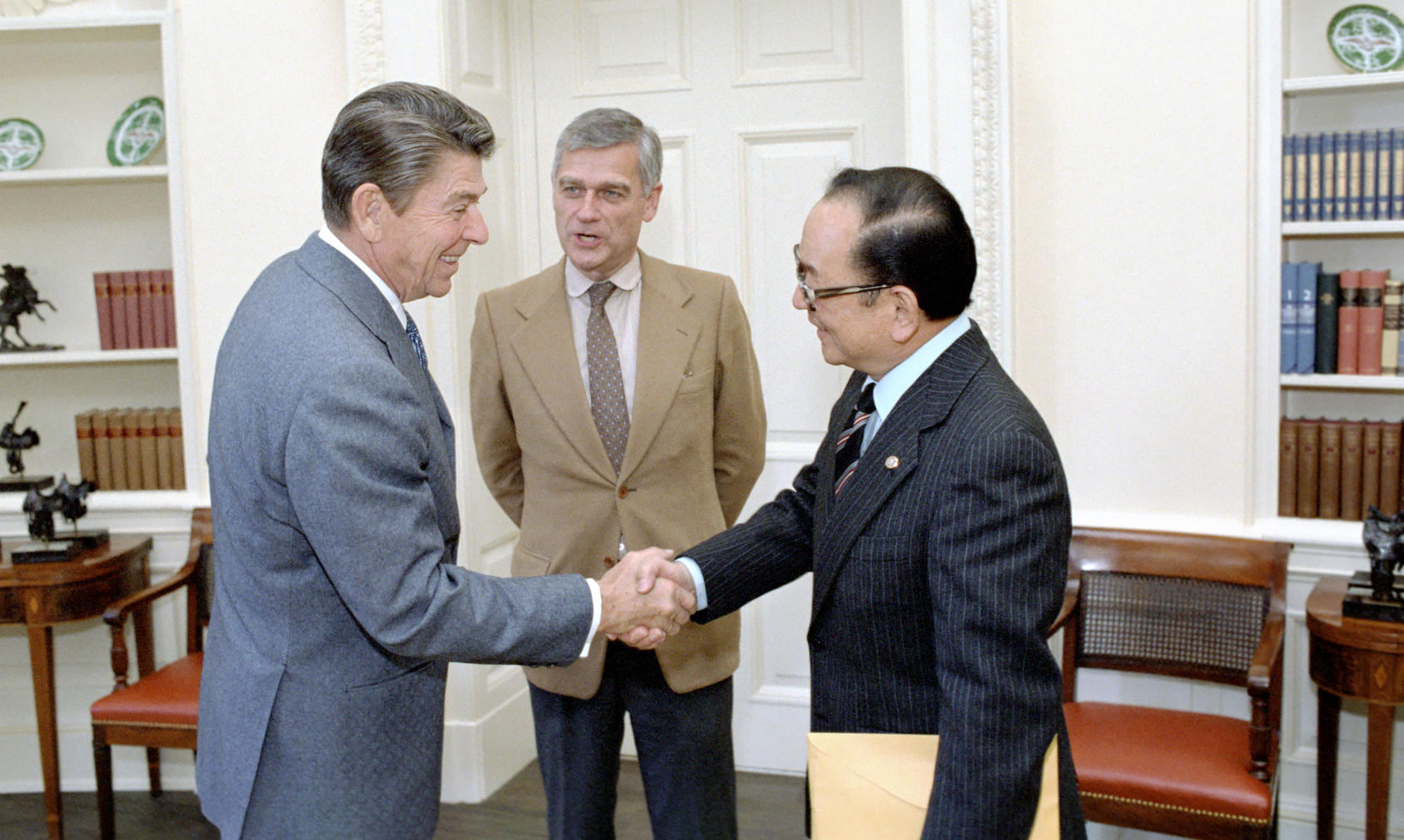The Origins of USIP
Institute’s Founders Were Visionaries, Grass-Roots Americans, World War II Veterans
Congress established the U.S. Institute of Peace in 1984 following years of proposals for the creation of a national “peace academy,” notably from a nationwide grassroots movement and from World War II combat veterans elected to legislative office.

The congressional leaders included Senator Mark Hatfield of Oregon, who had commanded Navy landing craft on the beaches of Iwo Jima and Okinawa, and had led the first American team to survey the destruction from the atomic bombing of Hiroshima. Senator Spark Matsunaga of Hawaii had been twice wounded and awarded the Bronze Star in the war’s North Africa and Italy campaigns.
Hatfield and Matsunaga led in Congress’ passage of the United States Institute of Peace Act, signed into law by President Ronald Reagan. The act established USIP as “an independent, nonprofit, national institute to serve the American people and the federal government” through work to promote “international peace and the resolution of conflicts among the nations and peoples of the world without recourse to violence."
Various proposals for national peacemaking institutions were part of American history dating back to the 1700s. The campaign that led to USIP’s founding had begun gathering momentum in the 1960s, as World War II veterans took greater roles in Congress.
Starting in the 1960s, Hatfield and Senator Vance Hartke of Indiana, a World War II Navy veteran, introduced bills to establish a national peace academy, drawing parallels with the nation’s four military service academies. As a member of the House of Representatives, Matsunaga introduced similar legislation in every Congress starting with his election in 1962.
In 1976, the effort accelerated, with the help of a growing grassroots movement. Hatfield and Hartke introduced a Senate bill for a national academy to advance the “state of peace among nations and cooperation between people.” West Virginia’s Senator Jennings Randolph co-led the effort, and Hawaii’s Matsunaga, elected to the Senate that same year, quickly joined.
A Wichita, Kansas, school board member elected to Congress in 1976, Dan Glickman, later recalled that his office soon received cartons full of postcards—eventually 40,000 of them—from supporters of the grassroots effort, the National Peace Academy Campaign. This movement’s leaders included Milton Mapes, a foreign affairs scholar and World War II veteran, and James Laue, a civil rights leader and pioneering scholar on conflict resolution.
After 1976, Congress agreed that a peace academy warranted serious exploration. In 1979 President Jimmy Carter appointed a commission to study the possibilities. With Matsunaga as chairman, the commission held public hearings in a dozen U.S. cities. In 1981, it reported back to Congress, affirming “the need and timeliness for Congress and the President to establish a federal institution for international peace research, education and training, and information services.”
The 1984 USIP Act, introduced by Hatfield, was approved. President Ronald Reagan signed it into law. Reagan met the first USIP board of directors at the White House in 1986, telling them: “As you begin your work for peace in the great American tradition, you have my best wishes and those of the American people.”
For more on USIP’s history and evolution see the Timeline in this section.